Exercise 2: Upload an app to a user or team
In this exercise, you will use the TeamsFx CLI to deploy cloud resources, package a custom Teams App, and then upload the App to Teams for a single user and a team, respectively.
Prerequisites
- A Microsoft 365 tenant.
[!NOTE] Follow the instructions on Welcome to the Microsoft 365 Developer Program for obtaining a developer tenant if you don’t currently have a Microsoft 365 account. Make sure you have also enabled Microsoft Teams.
- An Azure subscription.
[!NOTE] If you don’t currently have an Azure account, you can create a free Azure account before you start.
- Node.js - (v16.* is recommended or higher)
- TeamsFx CLI - (v1.* is recommended or higher)
- Bicep - (v0.4 is recommended or higher)
Task 1: Create a Microsoft Teams app package
-
Copy the Helpdesk-Upload-App folder to your local workstation from the Allfiles folder.
-
Open a Command Prompt with Administrative privileges.
-
From the command line, change the directory to the Helpdesk-Upload-App folder you copied to your local machine.
-
Execute the command below to log in to Microsoft 365.
teamsfx account login m365 - Execute the command below to log in to Microsoft Azure.
[!NOTE] If you have multiple Microsoft Azure subscriptions, execute this command
teamsfx account set --subscription <Subscription ID>to select the subscription you will use for testing.teamsfx account login azure -
Execute the command below to provision the cloud resources.
teamsfx provisionEnter the following values when prompted:
- ? Select a resource group: + New resource group
- ? New resource group name: helpdesk_dashboard-dev-rg
- ? Location for the new resource group: East US
- ? Do you want to provision resources in dev environment? Yes
-
Execute the command below to deploy the application.
teamsfx deployEnter the following values when prompted:
- ? Whether to deploy aad manifest: no
- ? Whether to deploy app manifest to Teams platform: no
- ? Do you want to deploy resources in dev environment? yes
-
Execute the command below to build your Teams app into a package.
teamsfx packageEnter the following values when prompted:
- ? Select an environment: dev
When the command is executed successfully, an app package (.zip file) is created in the /Helpdesk-Upload-App/build/appPackage/ folder. You will need this zip file later.
Task 2: Upload the custom app for a single user
Personal tabs, along with personally-scoped bots, are part of personal apps and are scoped to a single user. They can be pinned to the left pane for easy access.
-
Go to Microsoft Teams and select Apps.

-
Select Manage your apps > Upload an app > Upload a custom app to upload your packaged zip file.
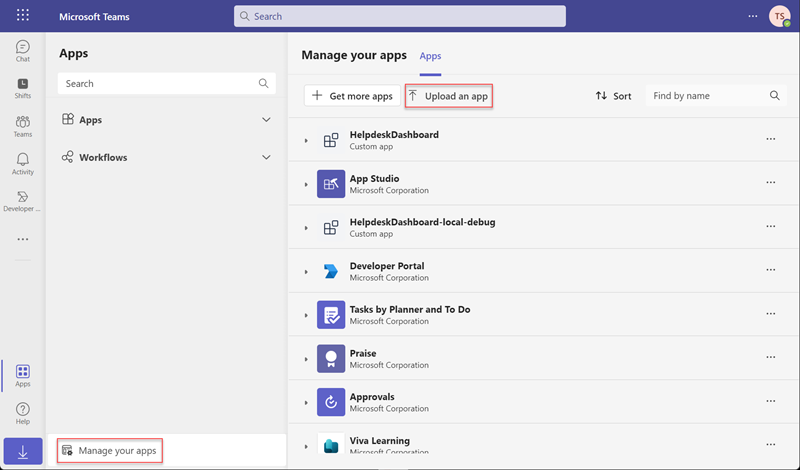
-
Select Add in the dialog. the app is uploaded to Teams.
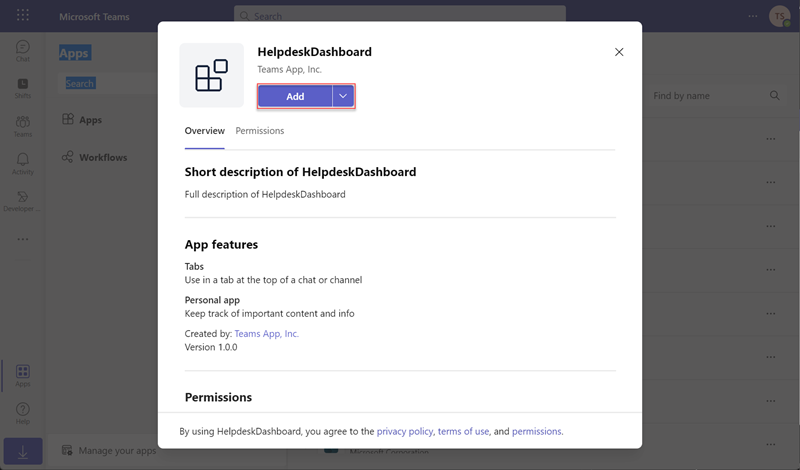
Now you have successfully added the custom app for a single user.
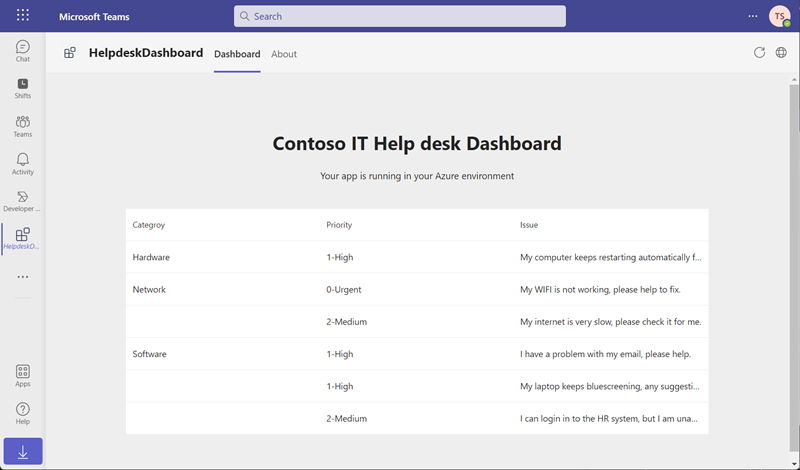
Taask 3: Upload the custom app to a team
Channel and group tabs deliver content to channels and group chats. They are a great way to create collaborative spaces around dedicated web-based content.
-
Go to Microsoft Teams and select Apps.

-
Select Manage your apps > Upload an app > Upload a custom app to upload your packaged zip file.

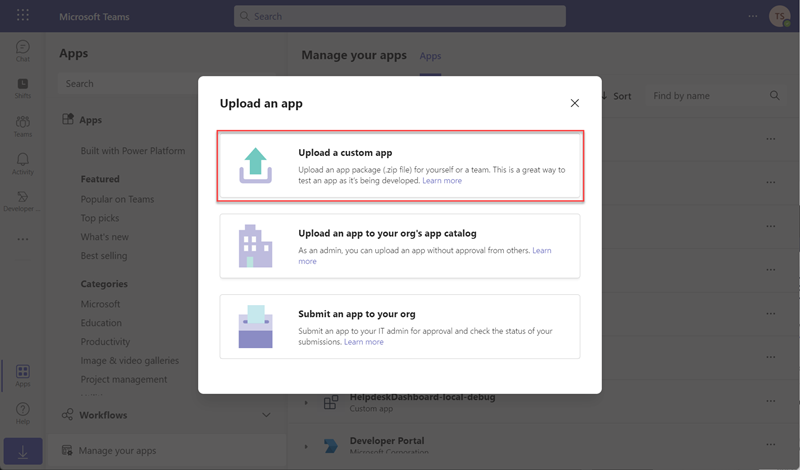
-
Select the chevron down icon to the right of the Add button in the dialog.
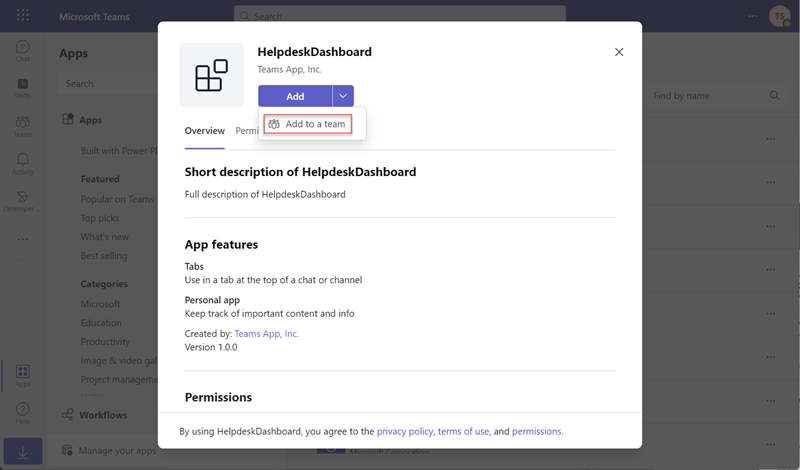
-
A Team picklist box will pop up, select a test Team channel, then select Set up a tab.
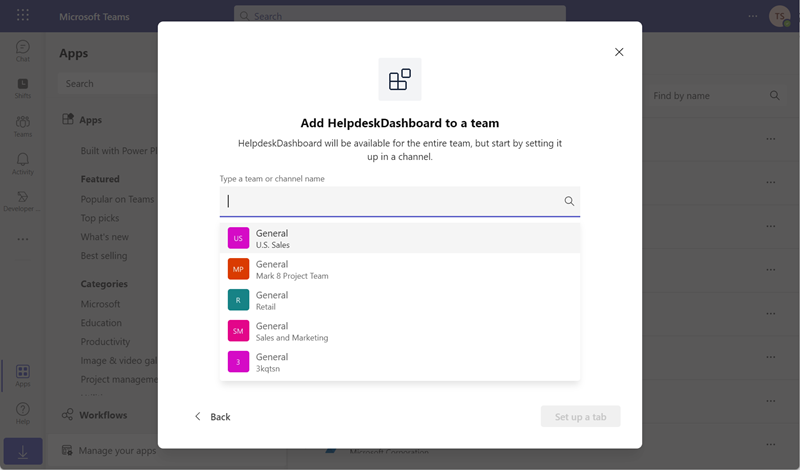
-
In configuration page, select Save and your tab is added to the channel’s tab bar.
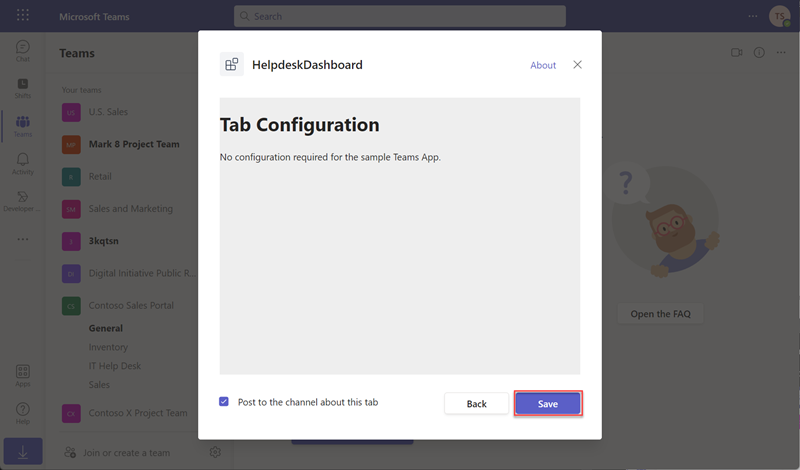
Now you have successfully added the custom Teams app to a team.
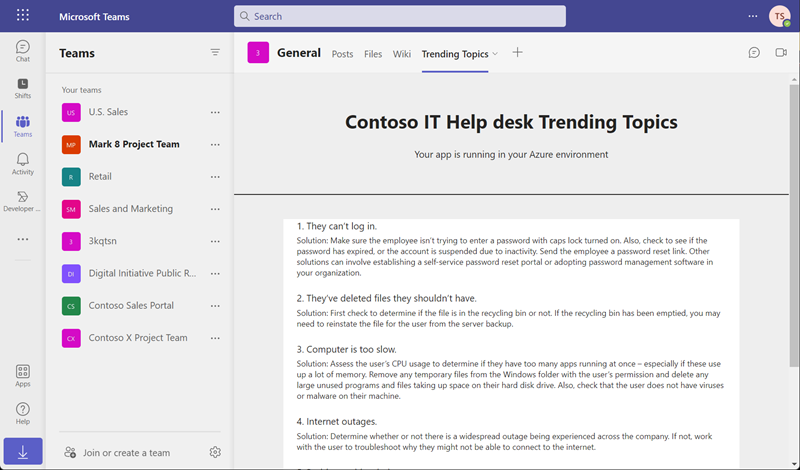
Summary
In this exercise, you added a custom Teams App for a single user and a Team.